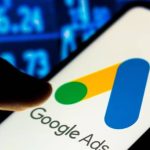
Have you ever wondered why your website analytics report two different metrics for the traffic hitting your landing pages? You see link clicks and landing page views, but aren’t they the same thing? Not exactly. While the terms are often used interchangeably, there’s an important difference between link clicks and landing page views you should understand. As a website owner, knowing the distinction can help you better analyze how people interact with your content and make smarter optimization decisions. Let’s hop into this detailed blog post!
Defining Landing Page Views vs Link Clicks
A landing page view happens when someone visits your landing page, while a link click refers to when someone clicks a link to your site. Both are important metrics to measure, but they provide different insights.
Landing Page Views
A landing page view means a visitor arrived on your landing page, the page specifically designed to capture leads or sell a product. Whether they clicked an ad, searched online, or typed in your URL, a view signals they were interested enough to check out your offer or content.
Tracking landing page views shows how much interest there is in your campaign or topic. A high number of views with a low conversion rate may mean your messaging or offer needs improvement. A low view count could indicate your targeting or advertising needs adjustment.
Link Clicks
Link clicks measure how many people clicked a link to your landing page. This could be a link in an email, on social media, or elsewhere on your site. Link clicks show how effective your copy and positioning of links are in driving traffic.
A high link click-through rate but low landing page views may mean your link isn’t relevant or appealing enough. Optimize your copy and link placement to better match your audience’s interests.
In the end, both metrics provide valuable insights into your marketing and content strategy. Track them both to get a full picture of how visitors are finding and responding to your landing pages. Make adjustments to continually improve your results.
Why Link Clicks and Landing Page Views Matter
Link clicks and landing page views are two of the most important metrics to track for your website. Here’s why:
Link Clicks Show Interest
Every time someone clicks a link on your site, social media profiles, or email campaigns and reaches your landing page URL, it signals that something caught their interest. Tracking link clicks helps you see what content and offers resonate most with your audience so you can provide more of the same.
Landing Page Views Indicate Engagement
A landing page view means someone not only clicked a link but actually visited the page it led to. This demonstrates a higher level of engagement and intent than a link click alone. If you see lots of link clicks but low landing page views, it may indicate your content or messaging needs improvement.
Together, They Help Optimize Performance
Analyzing link clicks and landing page views together provides insights into how well your content and calls-to-action are performing. You can see which links and pages have the best click-through and conversion rates so you can optimize advertising campaign or eliminate underperforming content. Run A/B tests to identify which landing pages and ads give you the best results.
More Clicks and Views Lead to Conversions
The more people click links to your content and landing pages, the more opportunities you have to capture leads and sales. While a single visit may not convert, repeat exposure through multiple link clicks and page views makes conversion more likely over time.
Tracking and optimizing based on link clicks and landing page views is key to improving the quality of the traffic to your website and turning visitors into customers. Paying attention to these two metrics will help boost your conversions and return on investment.
Measuring Success: Landing Page Views vs Link Clicks
So, you’ve set up your landing page and started promoting your links, but how do you know if your efforts are paying off? Two of the key metrics to track are landing page views and link clicks. While related, these metrics can provide different insights into how people are engaging with your content.
Landing Page Views
This metric simply tracks the number of times your landing page is viewed. Each time someone loads your landing page, it counts as one view. Landing page views provide a high-level sense of how much interest there is in your offer or content. However, views alone don’t show whether visitors actually clicked through to your site or converted in some way.
Link Clicks
Link clicks measure the number of times people actually click on links pointing to your landing page. This could be links in social media posts, emails, ads, or anywhere else you’re promoting your content. Link clicks indicate that visitors were intrigued enough by your messaging to want to learn more.
Comparing your landing page views and link clicks can reveal some useful insights:
- If you have a high number of link clicks but low landing page views, there may be an issue with your landing page that’s preventing people from staying on the page. Things like a slow load time, confusing layout, accidental clicks, or lack of clear next steps could be deterring visitors.
- A high number of landing page views but few link clicks could mean your promotional messaging needs improvement. Visitors landed on the page but may not have understood exactly what you were offering or how it could benefit them. Strengthening your call-to-action and highlighting key benefits may help.
- A balance of solid link clicks and landing page views is ideal and means both your promotion and landing page are resonating with your target audience. But don’t stop there—continue optimizing to improve click-through and conversion rates over time.
Tracking landing page views and link clicks and understanding the difference between these metrics is key to gauging interest in your offer and making the most of your promotional efforts. Look at these metrics regularly and make changes to your strategy and landing page based on the insights.
Increasing Landing Page Views and Link Click-Through Rates
Increasing your landing page views and link click-through rates is key to driving more website traffic and conversions. Here are a few tips to boost those numbers:
Optimize Your Content
Make sure the content on your landing pages is highly relevant to what people are searching for and provides value. Use keywords in your page titles, URLs, headings, and content. Provide useful information, tips, stats, or advice. The more relevant and helpful your content is, the more people will want to click and stay on your page.
Improve Your Call-to-Action
Your call-to-action (CTA) is what prompts people to click, so place it prominently on your page and make it stand out. Use an eye-catching button, graphic, or text link. Clearly state what people will get by clicking, like “Download Your Free Guide” or “Get Started Now.”
Share on Social Media
Promote your landing pages on social media websites like Facebook, Instagram, TikTok, and X to increase traffic and brand awareness. Try to use your company logo or a relevant image as your social media page’s profile picture. Share the page on platforms where your target audience spends time. Use hashtags to make your content more discoverable. Run social media ads on to your landing page to get more clicks from interested users. Offer something of value on the landing page to encourage people to share it with others. Nowadays, creating TikTok ads is a great way to reach people on social media since TikTok has taken over the social media world like a storm. Creating YouTube videos and maintaining a YouTube channel is also a great way to promote your product/service.
Analyze and Optimize
See which of your pages are getting the most traffic and clicks. Figure out what’s working well on those pages and apply it to underperforming ones. Look at metrics like time on page, bounce rate, and conversions to determine how engaging your content is. Make changes to improve readability, add visuals, rework your CTA, etc. Continuously optimizing your landing pages will lead to better results over time, helping you achieve your optimization goal. If you are running Facebook ads, then you can use Facebook Ads Manager to see metrics like the total number of clicks, number of conversions, cost per conversion, etc. Continuously monitor your ad performance and optimize your Facebook campaign ads from time to time to drive quality visitors. Stick to a specific daily budget / monthly budget so that you can run your Facebook ad campaign for the time period you desire without exhausting your funds too early.
The more you focus on creating an exceptional experience on your landing pages through useful content, strong CTAs, social sharing, and ongoing optimization, the more your traffic, clicks, and conversions will increase. Provide real value to your visitors, and the numbers will go up!
Optimizing Your Website for More Clicks and Views
To get more people clicking links on your website and viewing your landing pages, you need to optimize your content. Think about what makes you click a link or continue reading something—and apply that to your own site. This will give you more unique clicks to your destination URL.
Write engaging headlines
Your headlines are the first thing people see. Make them exciting and compelling to capture interest. Use numbers, superlatives, and power words to grab attention; if you are running an ecommerce business, one of the easiest ways to do this is to offer an unbelievable discount. You could use something like: “50% Discount on all products this summer!” This will greatly boost your lead generation efforts. Do some A/B testing with different types of headlines to identify the highest converting ones.
Use visuals
Images, graphics, photos, charts, and videos are highly engaging and help to visually break up your content. They also make your page more scannable and memorable. Include one visual for every 1-3 short paragraphs. Make sure to use web-optimized images that do not affect the speed of your website so that you can have good landing page load times. People tend to avoid pages that take too long to load.
Keep content scannable
Use plenty of headings, bulleted lists, short paragraphs, and white space. This makes your content easy to skim and more inviting to read, boosting your traffic objective. No one wants to read a wall of text!
Solve problems
Focus your content on solving problems or answering questions for your target audience. Provide real value and actionable tips, not just an overview. Give specific examples and how-to’s. This type of pragmatic content will convert more readers into clickers and viewers, helping you reach your advertising objective.
Mobile-optimize
With more and more people accessing the web via mobile devices, your website needs to be optimized for smaller screens. Use a responsive design, large text, and minimal clutter. If your site isn’t mobile-friendly, you’re missing out on a huge number of website visits and conversions.
Include internal links
Internal links point readers to other useful content on your site. Include links in your content to related posts and landing pages. This keeps people clicking and viewing more pages on your site rather than navigating away.
Optimizing your content in these key ways will transform more of your readers into engaged clickers and viewers. Focus on providing value through an excellent user experience, and your traffic and conversions will increase, resulting in new customers.
Conclusion
You’ve learned the difference between link clicks and landing page views, so now you have a better understanding of how people find and interact with your content. Focus on creating high-quality content and an optimized user experience to increase the number of landing page views – that’s the most important takeaway you can have from this guide. Pay attention to the flow of traffic and make improvements to turn more of those curious clickers into engaged readers. Keep tweaking and testing to find what resonates most with your audience. The more you can get people clicking and, more importantly, viewing and sticking around, the better. Keep on creating, learning, and growing your content and business to reach your traffic objective. You’ve got this!



